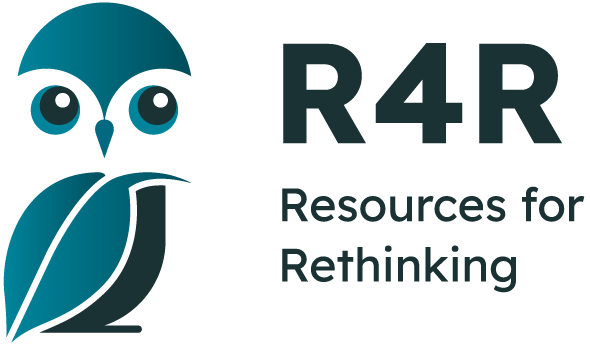Search for Resources

Resources
-
It's Moving Day
This picture book creatively shows that even animals recycle! In this case it is a burrow under a tree that from season to season, becomes home to a variety of different woodland creatures. Students will be struck by how many different animals can...
Full curriculum matchAvailable to Order -
Up We Grow!
Up We Grow focuses on the production and human interaction that characterize small, local farms. As awareness continues to grow regarding the relationship between health and locally-grown foods, this picture book relays the importance of ...
Full curriculum matchAvailable to Order -
DeforestACTION
DeforestACTION has as its goal that students become inspired by the wonders of the forest, informed of the causes and consequences of deforestation at the local and global level and involved with other students in creating a global action plan against...
Full curriculum matchAvailable for download -
Ocean Acidification
This resource features experiential learning opportunities that examine the effect of global warming on marine environments. Students conduct experiments to simulate ocean acidification resulting from excess carbon dioxide and then discuss the relationship...
Full curriculum matchAvailable for download -
The Buffer Zone: Acid-Base Chemistry in the World's Oceans
This resource features an experiential learning approach that examines the effects of global warming on marine environments. Students apply introductory acid-base theory (including conjugate acids/bases and buffers) in an experiment to simulate ocean...
Full curriculum matchAvailable for download -
Loon
Loon follows the first four years of two loon chicks as they grow into adulthood. The book is very informative providing a wealth of interesting facts accompanied by beautiful illustrations. Two additional pages provide more detailed information...
Full curriculum matchAvailable to Order -
The Gardener
The Gardener portrays the journey of Lydia Grace Finch who is sent off to live with her Uncle Jim because her father has lost his job. Lydia brings with her a suitcase full of seeds to the big, gray city and gradually transforms her uncle’s shop...
Full curriculum matchAvailable to Order -
Treat it Right® Storm Water
This teaching unit consists of four lessons that address issues connected to urban storm water management including water quality, water-borne materials, erosion and deposition, stream characteristics, continental drainage systems and human impacts. Lesson...
Full curriculum matchAvailable for download -
LSF's Building a Vermicomposter Action Toolkit for Secondary Students
This ESD resource focuses on a sustainable approach to managing organic waste. Students explore the environmental, social and economic aspects of waste disposal and apply what they have learned by building and operating a vermicomposter. This action toolkit...
Full curriculum matchAvailable for download -
My 2050 School's Toolkit
By 2050 young people will be living with the choices made today. A 13 year old today will be 52 years old in 2050 and may have children of their own. What future would they choose? My 2050 School's Toolkit lets students decide how they would fuel...
Full curriculum matchAvailable for download -
Sunny Schools Resources
This six-lesson resource aims to increase understanding and awareness of climate change and its impacts around the world. Through a variety of engaging activities students learn about renewable energy in a global context and are encouraged to take positive...
Full curriculum matchAvailable for download -
Tapped Out: The World Water Crisis
This resource explores many of the international debates which surround water. Is water a commodity or a human right? Should it be managed privately or publicly? What are the current and future threats to water? Students research current issues...
Full curriculum matchAvailable for download -
Reducing Global Consumption
This resource focuses attention on the relationship between human consumption and environmental degradation, with particular attention paid to declining biodiversity. Students first become familiar with a number of concepts including...
Full curriculum matchAvailable for download -
Sustainable Engineering
This activity-based, ESD resource integrates sustainability issues into the teaching of engineering, technology and product design concepts. Students are asked to describe and evaluate the impacts of engineering on the environment and to reflect on their...
Full curriculum matchAvailable for download -
Amphibial Pursuits FrogWatch Teachers’ Guide
Amphibial Pursuits is the teachers’ guide to Frogwatch a program through which students learn to identify frogs by sound and contribute valuable scientific information to a national amphibian monitoring program. This guide is a multi-disciplinary...
Full curriculum matchAvailable for download -
Flo and Eddy's Water Adventure
This story follows the silly duo of Flo, the pelican and Eddy the cormorant as they head out on their fall migration. Initially they get lost, but soon find their route using waterways to guide them. As they travel they experience water in...
Full curriculum matchAvailable to Order -
Penny Visits Oak Hammock Marsh
In this story Penny's grandfather takes her on a field trip to Oak Hammock Marsh, Manitoba. Grandpa Brown is an avid naturalist who teaches Penny all about the birds and other animals they see. When they stop for lunch Penny learns an important...
Full curriculum matchAvailable to Order -
The Little Hummingbird
This Indigenous folk tale focuses on the message that we should do everything we can to protect our environment. All of the animals flee a great fire that is burning their forest, except for the little hummingbird. She carries water one drop at...
Full curriculum matchAvailable to Order -
The Busy Beaver
The beaver in this story is so busy felling trees that he puts no thought into his actions. Consequently he causes devastation in the forest. Finally the busy beaver's carelessness results in an accident. From his hospital room the beaver...
Full curriculum matchAvailable to Order -
Judy Moody Saves the World
As one volume in the Judy Moody series, this book has all of the usual humorous characters and wit that has made these stories so popular. Judy Moody wonders how one person can "heal the world". She tries to get her family to rethink the products...
Full curriculum matchAvailable to Order

